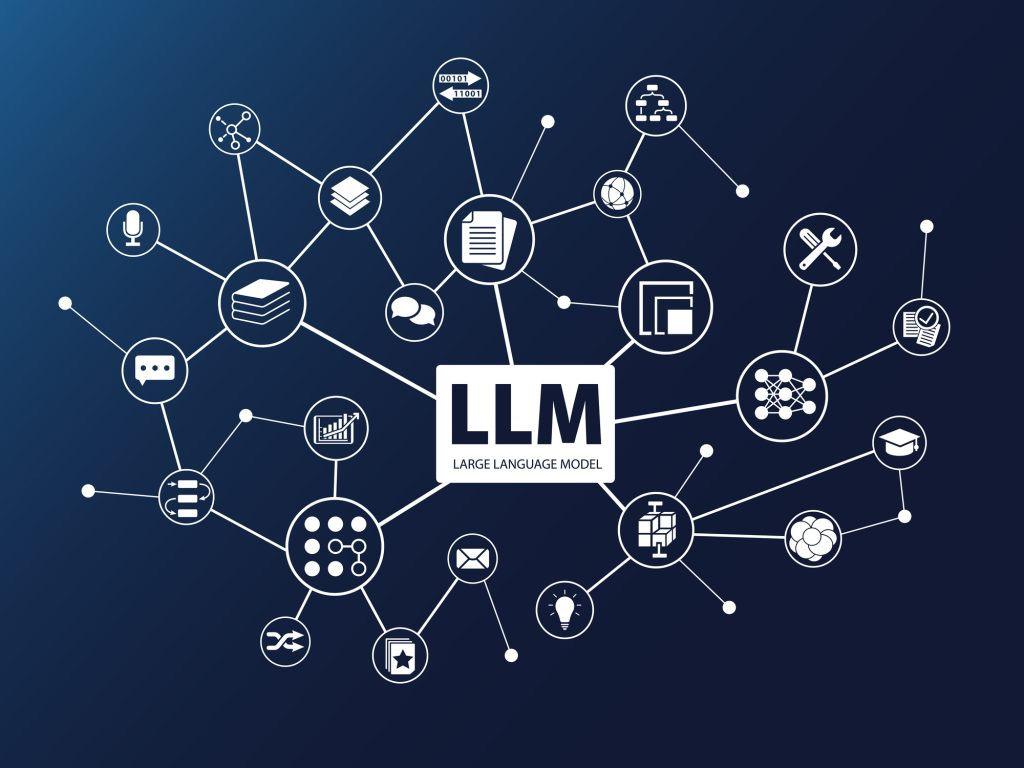Title: "Unlocking the Power of Large Language Models"
Exploring the Transformative Potential of Advanced Natural Language Processing
Introduction to Large Language Models (LLMs):-
Large Language Models (LLMs) are a type of artificial intelligence algorithm that has revolutionized the field of natural language processing (NLP). These models are trained on vast amounts of text data, allowing them to understand and generate human-like language with accuracy and versatility.
LLMs are built using advanced neural network architectures, such as the Transformer, which enables them to capture complex linguistic patterns and relationships. By learning from diverse texts, these models develop a deep understanding of language, allowing them to perform a wide range of NLP tasks with remarkable efficiency and accuracy.
Significance of LLMs:-
The significance of LLMs lies in their ability to transform various industries and applications. These models have become indispensable tools for tasks such as text generation, translation, content summarization, conversational AI, and even code generation.
LLMs have demonstrated their versatility by continuously expanding their capabilities, including the ability to process and generate multimodal content, such as images, audio, and video. This integration of different data types has opened up new frontiers for LLM applications, from image captioning to music composition.
Uses of LLMs
Large Language Models have a wide range of applications across various industries and domains. Some of the key use cases include:
Text Generation: LLMs can generate human-like text on any topic, from creative writing to business proposals.
Language Translation: LLMs can provide accurate and context-aware translations between languages, breaking down language barriers.
Content Summarization: LLMs can quickly extract key information from lengthy documents, aiding in research and decision-making.
Conversational AI: LLMs power chatbots and virtual assistants, enabling more natural and human-like interactions.
Code Generation: LLMs can assist developers by generating, explaining, and debugging code.
Example of an LLM: GPT-3:-
One of the most prominent examples of an LLM is GPT-3 (Generative Pre-trained Transformer 3), developed by OpenAI. GPT-3 is a state-of-the-art language model that has set new benchmarks in natural language understanding and generation. With its impressive performance and broad applicability, GPT-3 has become a widely adopted LLM, powering a variety of applications, from chatbots to content creation tools.
How LLMs are Developed:-
Large Language Models are developed using advanced machine learning techniques, primarily deep learning. The process typically involves the following steps:
Data Collection: LLMs are trained on vast amounts of text data, including books, articles, websites, and other online sources.
Model Architecture: LLMs are built using neural network architectures, such as the Transformer, which enables them to capture complex linguistic patterns.
Training: The model is trained on the collected data using techniques like unsupervised pre-training and fine-tuning, allowing it to develop a deep understanding of language.
Evaluation and Optimization: The model’s performance is continuously evaluated, and adjustments are made to improve its accuracy, efficiency, and safety.
LLMs and AI/ML:-
Large Language Models are a fundamental part of the field of Artificial Intelligence (AI) and Machine Learning (ML). LLMs are considered a subfield of NLP, which is a branch of AI that focuses on the interaction between computers and human language.
LLMs are developed using advanced ML techniques, such as deep learning, which enable them to learn from vast amounts of data and perform complex language-related tasks. As the field of AI continues to evolve, LLMs are expected to play an increasingly important role in driving innovation and transforming various industries.
List of LLMs Present in Today's World:-
In today's world, Large Language Models (LLMs) play a pivotal role in various applications and industries, revolutionizing natural language processing. Here is a list of some of the prominent LLMs present in the current landscape:
GPT-4: OpenAI's GPT-4 is a leading AI Large Language Model known for its exceptional capabilities in complex reasoning, advanced coding, and achieving human-level performance in diverse skills. It is the first multimodal model accepting both text and image inputs, addressing hallucination issues, and significantly improving factuality. GPT-4 has a massive scale, advanced natural language understanding, and fine-tuning flexibility, making it versatile for various NLP applications.
Link:- https://openai.com/gpt-4/
Gemini: Google's Gemini model is a significant LLM that combines text generation with other modalities like images and audio, paving the way for multimodal models. Gemini demonstrates the potential of integrating different data types to enhance AI capabilities.
Claude: Anthropic's Claude is a text generator built on top of LLM technology, showcasing the practical applications of these models in content creation and text generation. Claude is part of the wave of LLMs that have transitioned from research labs to real-world applications.
Conclusion:-
In conclusion, Large Language Models (LLMs) have revolutionized the field of natural language processing, enabling machines to understand and generate human-like language with unprecedented accuracy and versatility. From text generation and translation to content summarization and conversational AI, LLMs have transformed various industries and applications.
References:-
OpenAI. (2022). GPT-3. Retrieved from https://openai.com/gpt-3/
Google. (2022). Gemini. Retrieved from https://ai.google.com/gemini/
OpenAI. (2022). GPT-4. Retrieved from https://openai.com/gpt-4/










